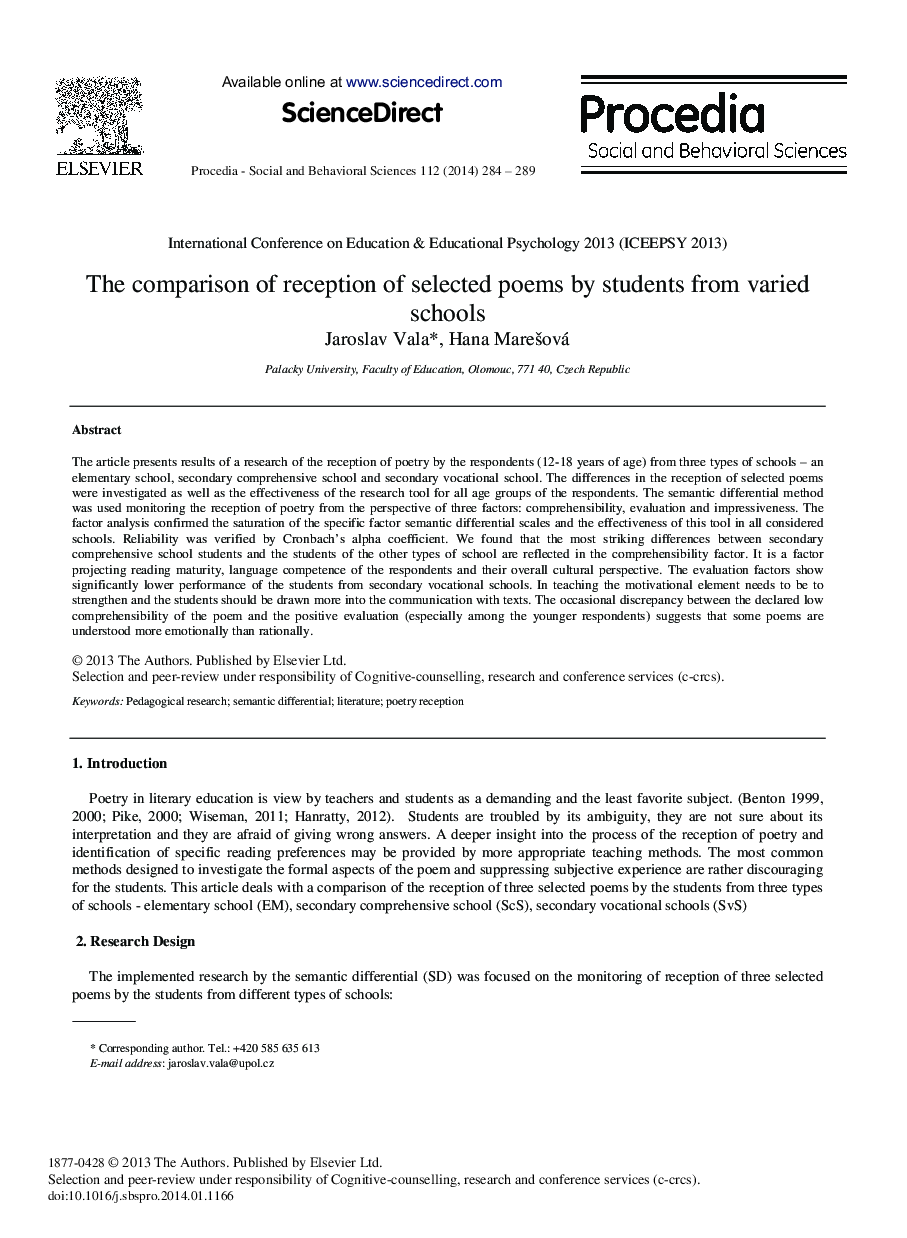| Article ID | Journal | Published Year | Pages | File Type |
|---|---|---|---|---|
| 1115434 | Procedia - Social and Behavioral Sciences | 2014 | 6 Pages |
The article presents results of a research of the reception of poetry by the respondents (12-18 years of age) from three types of schools – an elementary school, secondary comprehensive school and secondary vocational school. The differences in the reception of selected poems were investigated as well as the effectiveness of the research tool for all age groups of the respondents. The semantic differential method was used monitoring the reception of poetry from the perspective of three factors: comprehensibility, evaluation and impressiveness. The factor analysis confirmed the saturation of the specific factor semantic differential scales and the effectiveness of this tool in all considered schools. Reliability was verified by Cronbach's alpha coefficient. We found that the most striking differences between secondary comprehensive school students and the students of the other types of school are reflected in the comprehensibility factor. It is a factor projecting reading maturity, language competence of the respondents and their overall cultural perspective. The evaluation factors show significantly lower performance of the students from secondary vocational schools. In teaching the motivational element needs to be to strengthen and the students should be drawn more into the communication with texts. The occasional discrepancy between the declared low comprehensibility of the poem and the positive evaluation (especially among the younger respondents) suggests that some poems are understood more emotionally than rationally.
